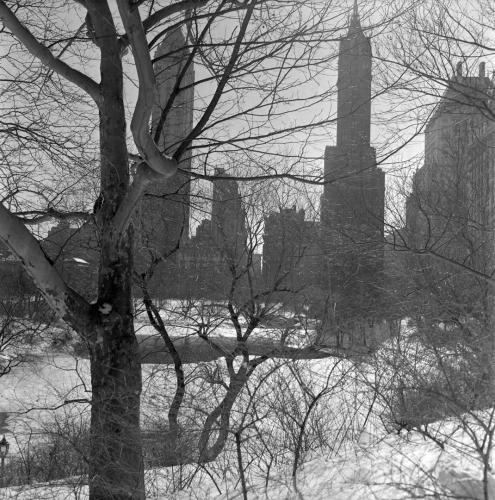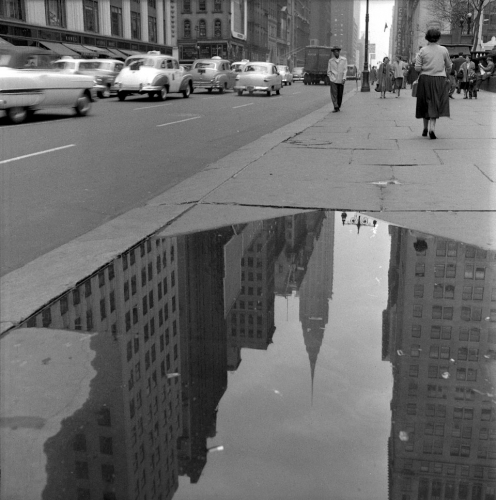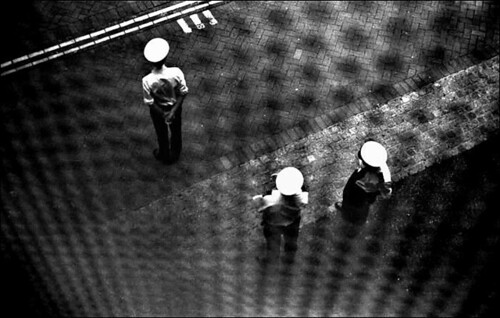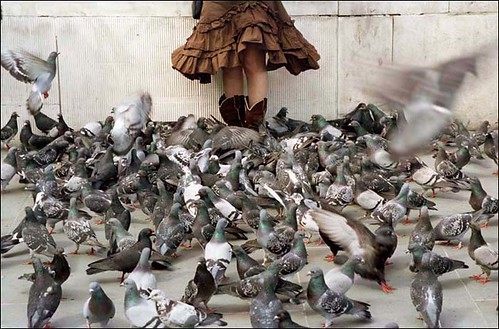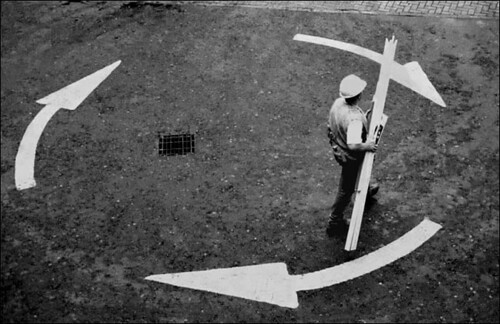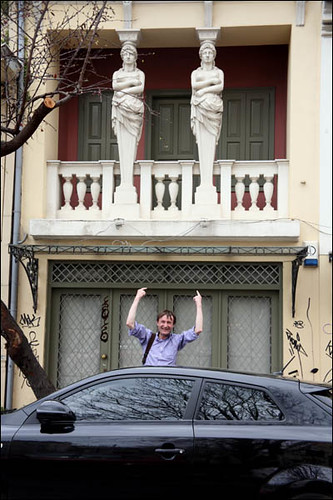"Photography is not brain surgery. It’s not that complicated. It’s easier now than it was before, but before it wasn’t that hard. It was reasonably easy. It’s not the ease; it’s what you do and how you do it and how you construct your life and your vision.”
-Elliott Erwitt
When you are 83 and busier than ever, When International Center of Photography is choosing to honor you with Lifetime Achievement Infinity Award and you give that kind of answer that the best is yet to come, That is what makes a Great Photographer!!
Speaking of the Lifetime Achievement Infinity Award, Elliott Erwitt, in his deadpan humor, remarks, “I was very pleased of course, but I must say that I’ve had four lifetime awards in a short period of time…so I guess my life must be over pretty soon.”
Lets find out what is his remarks about some of his Great pictures he reflect as favorites
"This picture here of two kids with masks was taken in Paris in 1949. I was in the army at that time and and I was on furlough in Paris. Why is it a meaningful picture to me? It's meaningful because I think it’s a good picture — no particular story in it. It’s a snapshot. In fact, most of my good pictures are snaps."
"Here we have a picture that I’m quite fond of. It was taken in Siberia at a wedding palace and shows a wedding couple and their best man. The best man seems to know something that the wedding couple are timid about. Anyway, it's a picture that’s kind of funny...it makes you think. You can supply your own judgment about what is really on the mind of these people. I give this picture to friends of mine that are either getting married or divorced."
"I am an amateur photographer as well as a professional photographer. When I'm in places that are interesting, I whip out my camera and take pictures. One such place is the beach. I love to go to the beach and I love to take pictures there. It’s a wonderful situation — most of the people are exhibitionists and don’t mind being photographed if they notice you. I’ve done a number of books on beaches. This is one of my favorite pictures from Rio de Janeiro."
"This popular picture of mine was taken quite recently around the corner from where I live. A dog walker and his two bull dogs. I walk my dog and so I see him often in the park."
"This is one of my daughters at the Metropolitan Museum. This is daughter number six — Amy is on the right."
"This is my dog. I like this picture because it's at the beach and it's about a dog — the two subjects that are close to me. That's my dog, Sammy, who is blind and deaf but still here. Now he’s almost 17. He was a German dog that came with my wife but he’s lost his language and barks in English now."
"This is one of my daughters at the Metropolitan Museum. This is daughter number six — Amy is on the right."
"This is my dog. I like this picture because it's at the beach and it's about a dog — the two subjects that are close to me. That's my dog, Sammy, who is blind and deaf but still here. Now he’s almost 17. He was a German dog that came with my wife but he’s lost his language and barks in English now."
"This was a picture that I didn’t know I had until 25 years after I took it...and it become a popular photo for galleries and exhibitions. It's at the end of Route 66 in Santa Monica or Pacific Palisades. It was kind of a place where you went to look at the sunset and muck about."
All photographs ©Elliott Erwitt
"This is my best known photo that was in the Family of Man. It shows my first wife, my first child and my first cat. I know exactly when it was taken 'cause my baby was six days old — 1953. It was in New York in my very first apartment."
"This is my best known photo that was in the Family of Man. It shows my first wife, my first child and my first cat. I know exactly when it was taken 'cause my baby was six days old — 1953. It was in New York in my very first apartment."
What is his Favorite published book?
“I suppose the book that has my favorite photographs is called Personal Best (teNeues). As the title implies, it has my better pictures. This kind of book is a compendium of my work. Its just going through my checkered career and picking stuff out that seemed to be a good picture or story or good situation and them putting it together in some kind of design-y way — that’s how you do a book. Or at least this kind of book…a retrospective.”
The difference between a picture and a snapshot?
“There is no difference. A good picture is a good picture. I call them snaps because it’s an appropriate name and it’s something that you do quickly and them move on to the next thing. Go snap and gone…there is no difference. The only difference is between a good and bad picture, or a boring picture. A picture that engages you, that makes you think, that gives you some kind of emotion, makes you laugh or cry. That’s a good picture.”
The difference between a picture and a snapshot?
“There is no difference. A good picture is a good picture. I call them snaps because it’s an appropriate name and it’s something that you do quickly and them move on to the next thing. Go snap and gone…there is no difference. The only difference is between a good and bad picture, or a boring picture. A picture that engages you, that makes you think, that gives you some kind of emotion, makes you laugh or cry. That’s a good picture.”
How does he balance finding the time to make new personal work?
“I use a fast shutter speed.”
You can find more Photos and quotes in Time LightBox
You can find an interesting interview that gave to his son Misha in New York Times












